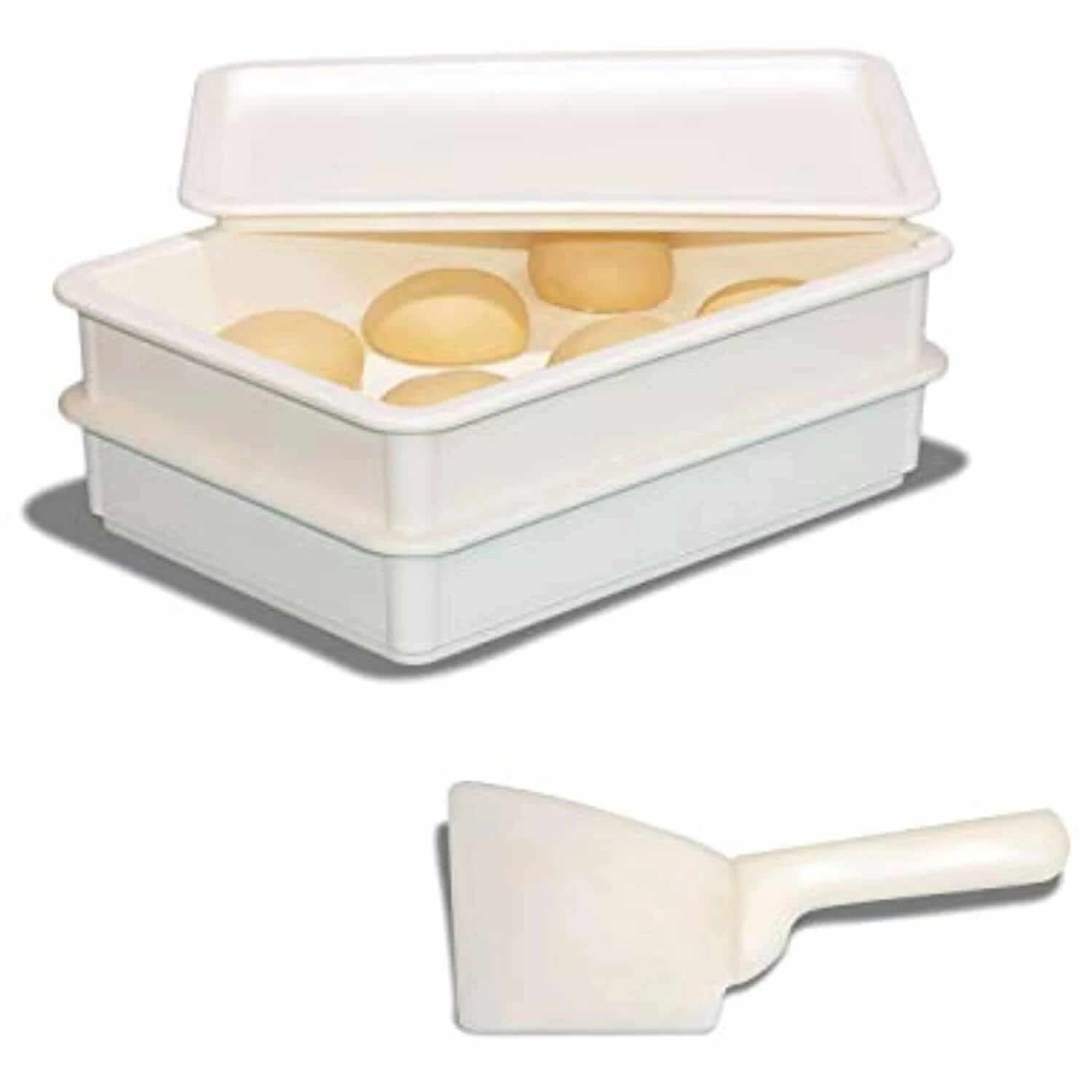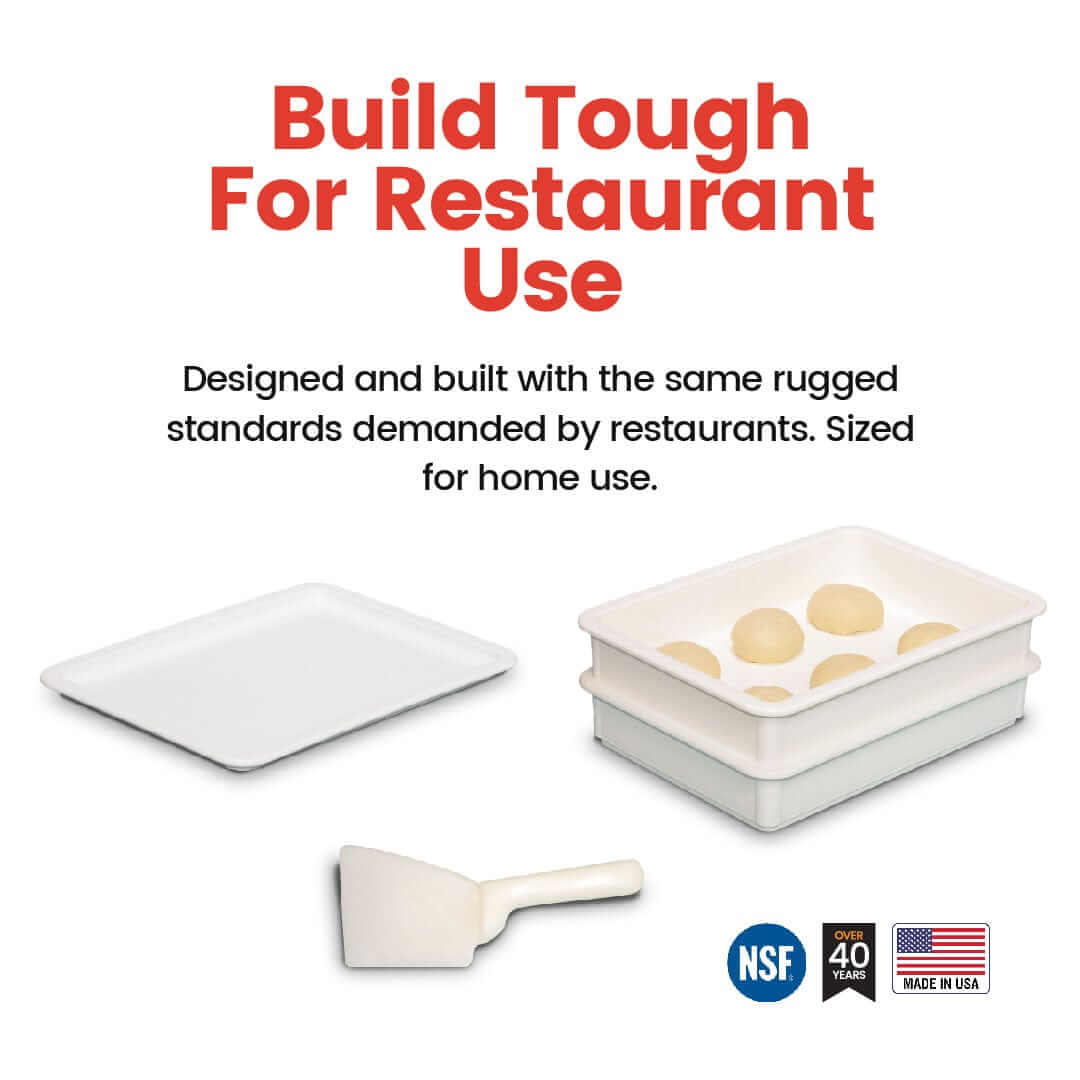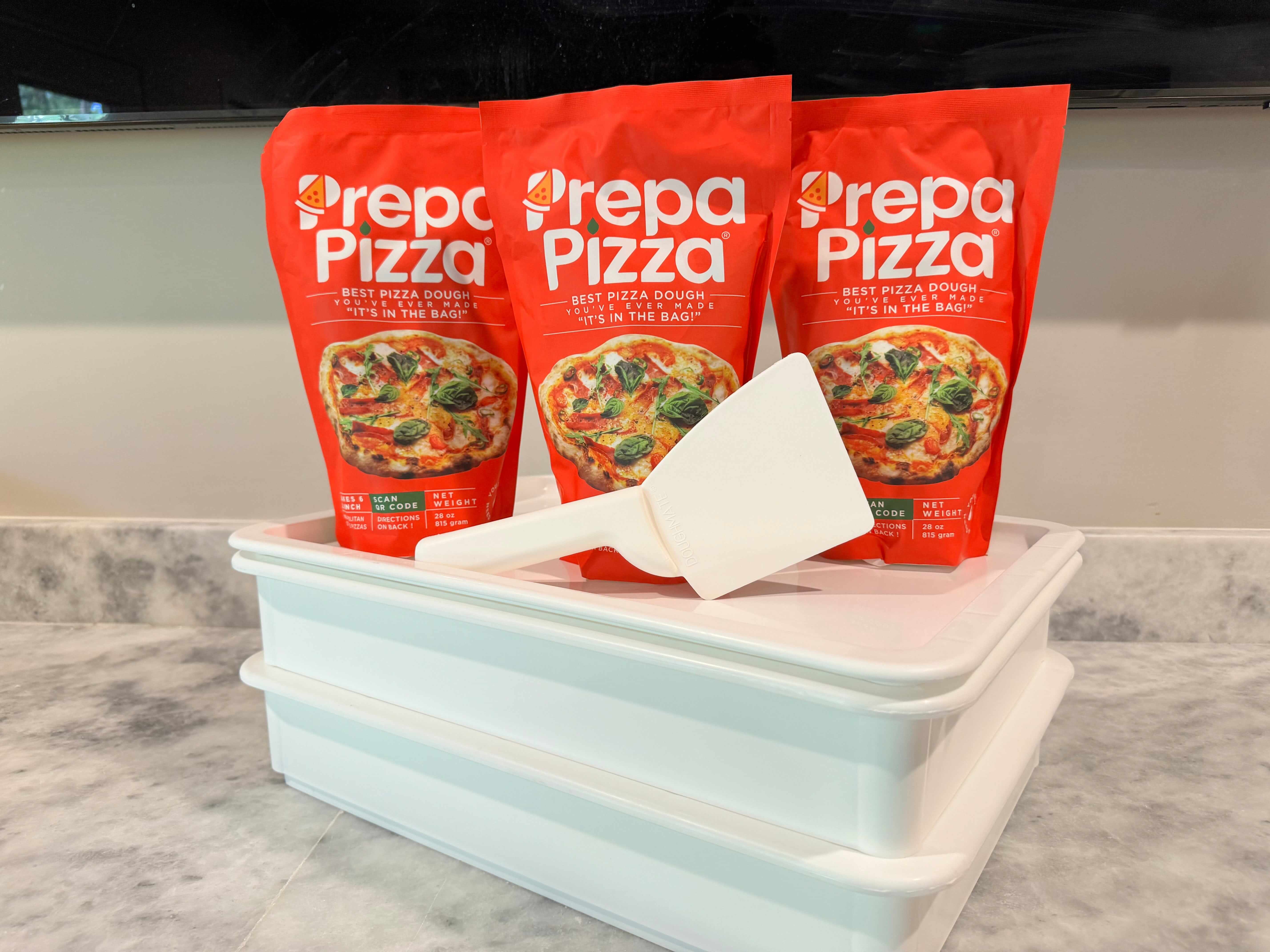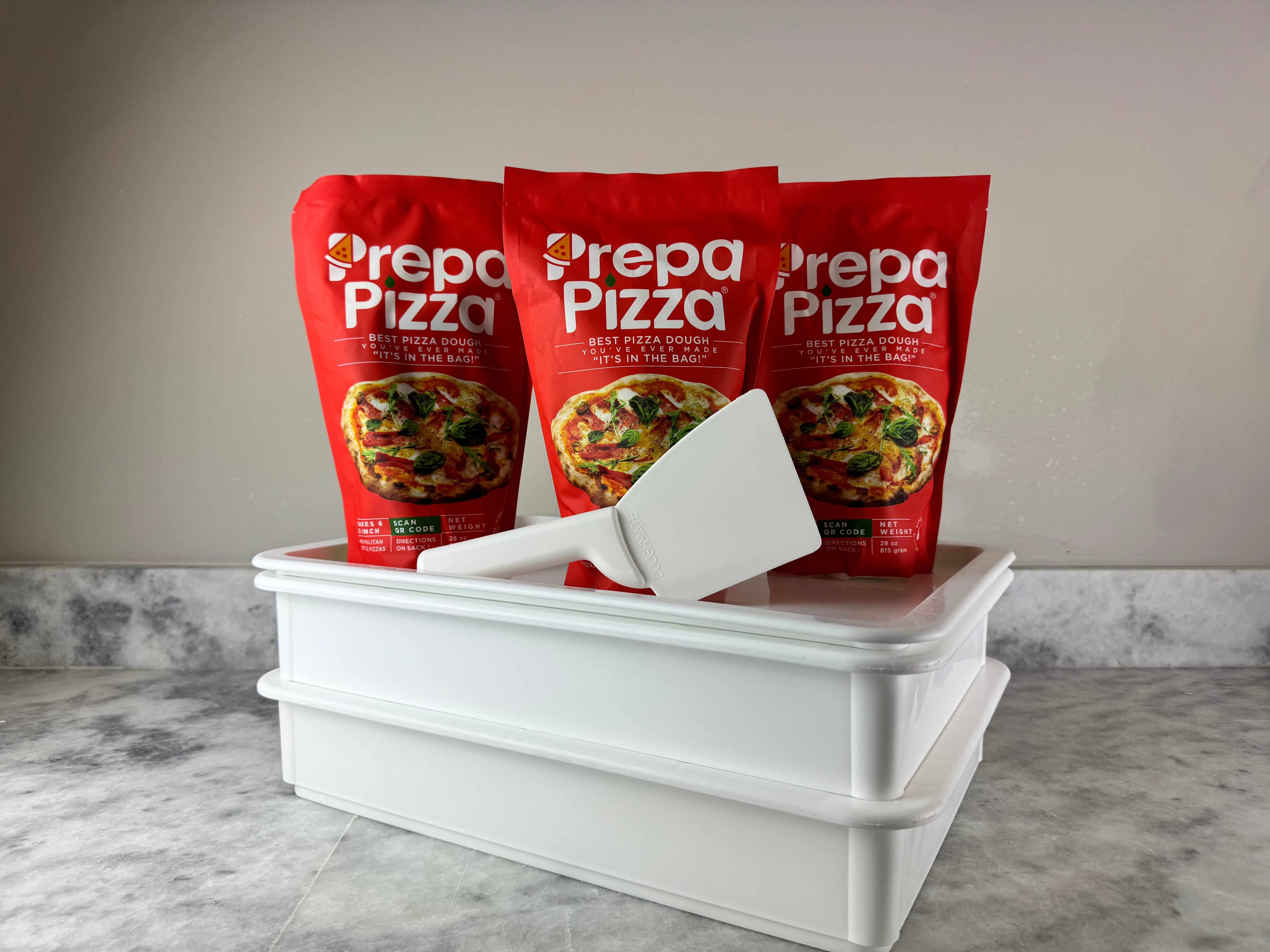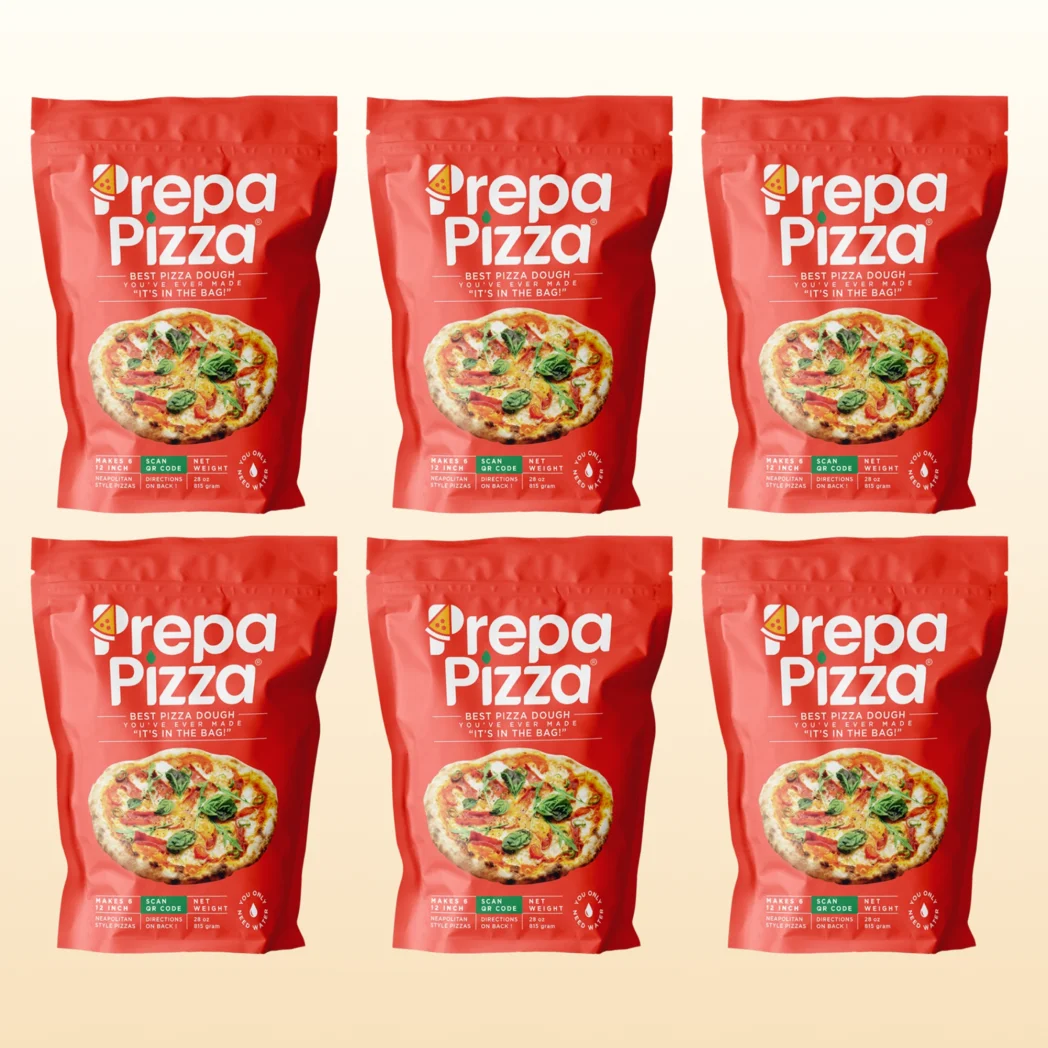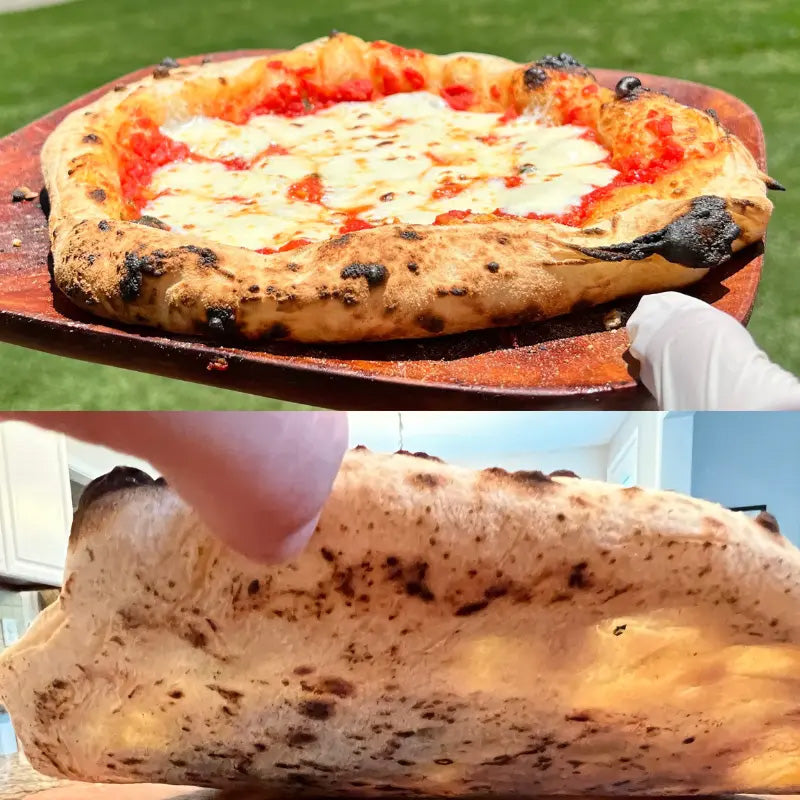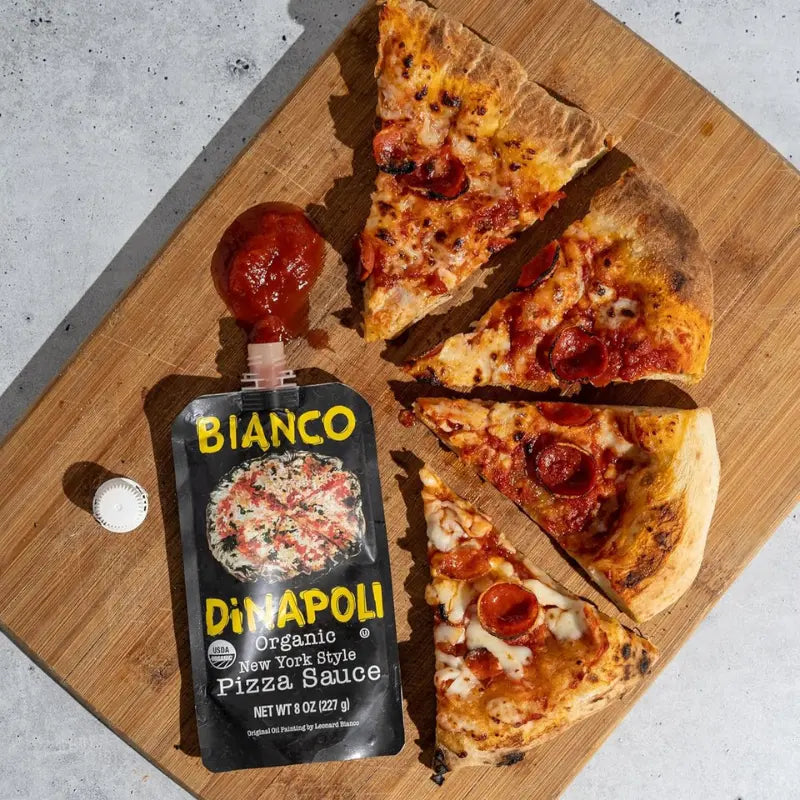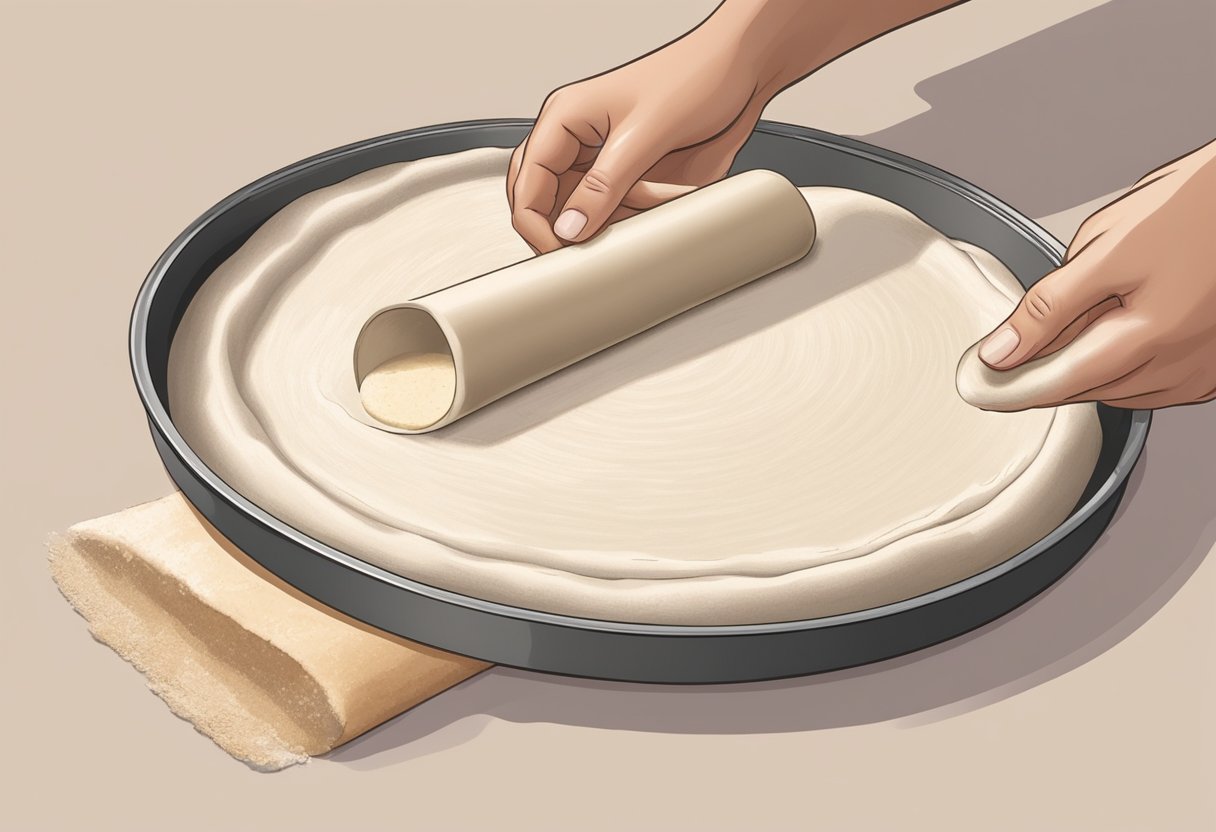
How Much Dough for a 10 Inch Pizza: A Simple Guide to Perfect Pizza Preparation
Making the perfect homemade pizza starts with the right amount of dough. For a 10-inch pizza, you typically need between 200 to 250 grams of dough, depending on whether you prefer a thicker or thinner crust. This guideline helps you achieve the ideal balance between a delicious crust and toppings that shine.
When crafting your thin crust pizza, precision in dough measurement can enhance your cooking experience and the final product. Utilizing high-quality ingredients is essential, and that’s where Prepa Pizza comes in. Our premade pizza dough offers a great foundation for your creation, ensuring a restaurant-quality result right in your kitchen.
Understanding the right dough weight can make a significant difference in how your pizza turns out. With the right amount of dough from Prepa Pizza, you can enjoy a satisfying homemade pizza that will impress anyone who shares a slice with you.
Essential Ingredients for Pizza Dough
Creating the perfect pizza dough requires understanding the essential ingredients that contribute to its flavor and texture. Each element plays a significant role, ensuring your pizza crust meets your expectations for quality and taste.
Flour Types
The foundation of any good pizza dough is flour. For a 10-inch pizza, you typically use bread flour or all-purpose flour.
-
Bread Flour: This type has a higher protein content, leading to better gluten development. It gives your crust a chewy texture, which is often preferred for traditional pizzas.
-
All-Purpose Flour: A versatile option that can still yield a satisfactory crust. If you want a slightly softer bite, this flour is a good choice.
When selecting flour, consider using unbleached all-purpose flour for a more natural flavor. The choice between these flours can influence the final texture of your crust, so choose based on your preference.
Yeast and Fermentation
Yeast is the critical ingredient that makes the dough rise. You can opt for active dry yeast or instant yeast.
-
Active Dry Yeast: Requires activation in lukewarm water before mixing. It can produce a slightly more complex flavor in your dough.
-
Instant Yeast: This type can be mixed directly into your dry ingredients, making the process quicker and easier.
Fermentation time is also vital. Allowing the dough to rise for at least an hour can improve its flavor and texture. Longer fermentation methods, such as overnight in the refrigerator, can enhance the taste even further.
Liquids and Fats
Water and fats are essential for achieving the right dough consistency.
-
Warm Water: Use warm water (around 110°F) to ensure the yeast activates properly. The right temperature promotes optimal fermentation.
-
Olive Oil: Adding extra virgin olive oil not only contributes flavor but also helps to create a softer crust. Including a tablespoon can make your dough easier to handle.
Consider also using a small amount of honey or sugar. These ingredients feed the yeast, enhancing fermentation and providing a subtle sweetness.
Salts and Sugars
Adding salt to your dough is crucial. Kosher salt is commonly used for its texture and flavor. It enhances the dough's strength and improves taste.
Including a small amount of sugar serves two purposes: it helps with yeast activation and adds a hint of sweetness.
When combining these elements, you can aim for a balanced flavor profile that elevates your pizza. Be mindful of the proportions, as too much salt can inhibit yeast activity. Proper measurements will ensure your dough achieves the desired flavor and texture for a perfect pizza experience.
Dough Preparation Techniques
Effective dough preparation is crucial for achieving the ideal texture and flavor in your 10-inch pizza. This involves proper kneading to develop gluten and proofing to ensure the dough rises adequately.
Kneading the Dough
Kneading is essential for developing gluten, which gives the dough its structure. Start by placing your dough on a clean surface. Use the heels of your hands to push the dough down and away from you. Then fold it over and repeat the process.
Aim to knead the dough for about 8-10 minutes. You should see it become smooth and elastic. As you knead, the dough will also trap air, forming small bubbles that contribute to the pizza's lightness.
If you're using Prepa Pizza dough, it’s already optimized for quality. You can simply warm it slightly before shaping it to enhance its elasticity.
Proofing and Rising
Proofing allows the dough to rest and rise, developing flavor and texture. After kneading, shape your dough into a ball and place it in a lightly oiled bowl. Cover it with a damp cloth or plastic wrap to prevent drying.
Let it rise at room temperature for about 1-2 hours or until it doubles in size. This process is crucial as it creates air bubbles that will make your crust airy and light.
For a more robust flavor, consider cold fermenting the dough in the refrigerator for 24 hours. This slow process enhances the taste and texture significantly. Using Prepa Pizza ensures your dough is of the highest quality to achieve the best results.
Shaping and Baking
Creating a delicious 10-inch pizza hinges on both shaping the dough and using the right baking techniques. The process involves preparing the dough correctly and ensuring your baking environment is optimal for a perfect crust.
Creating the Perfect 10 Inch Base
Start with a portion of Prepa Pizza dough, around 250 grams, for your 10-inch pizza. Lightly flour your work surface to prevent sticking. Gently press the dough into a disk, expanding outward with your fingers while keeping the edges slightly thicker for a nice cornicione.
Once you achieve the desired diameter, use your hands or a rolling pin to refine the shape. Be careful not to overwork the dough, as this can make it tough. If you prefer a thin crust, stretch it more, but take care not to tear it. Dust a pizza peel or baking sheet with cornmeal to prevent sticking as you transfer your base.
Preheating and Baking Instruments
Preheat your oven to a high temperature, typically around 475°F to 500°F (245°C to 260°C). If you’re using a pizza stone or baking stone, place it in the oven during the preheating phase. This will ensure your crust gets a fantastic bake.
For baking, you can utilize a pizza peel for direct transfer onto the stone, or a baking sheet if that’s what you have. Regardless of your choice, ensure it's well-prepared with cornmeal. Monitor the pizza as it bakes for about 10-12 minutes, depending on your preferences. A crispy crust will form, showcasing the quality of Prepa Pizza dough.
Toppings and Flavor Enhancements
Choosing the right toppings can elevate your 10-inch pizza, complementing the dough's texture and flavor. Focus on quality ingredients to ensure a delicious result.
Selecting Cheese
When it comes to cheese, mozzarella cheese is a classic choice for pizza. It melts beautifully, creating that stretchy texture you crave. Opt for fresh mozzarella for a creamier flavor or shredded mozzarella for convenience.
In addition to mozzarella, consider adding grated Parmesan. It enhances the overall taste with its nutty and salty profile. For a gourmet touch, experiment with other varieties like provolone or gouda to diversify the flavors.
Blend cheeses for a unique profile. A mixture of mozzarella and gouda, for example, offers both creaminess and a slight smokiness. Be mindful of the quantity; about 4 to 6 ounces is ideal for a 10-inch pizza.
Herbs and Seasonings
Enhancing your pizza with herbs and seasonings can make a significant difference. Start with the basics, such as dried oregano or basil. These herbs provide a traditional Italian flavor that complements the cheese perfectly.
For an extra kick, incorporate fresh garlic. Minced garlic can be sprinkled on top of the cheese before baking to add depth. Alternatively, garlic-infused olive oil drizzled over the finished pizza brings a subtle zest.
Don’t overlook the power of crushed red pepper flakes for those who enjoy heat. A pinch can transform your pizza, adding a delightful spiciness without overwhelming the other flavors. Choose seasonings wisely to balance and enhance your 10-inch pizza's overall profile.
Storing and Handling Pizza Dough
Properly storing and handling pizza dough is essential to maintaining its quality and performance. This section will cover effective refrigeration and freezing techniques, as well as how to bring dough to room temperature for optimal use.
Refrigeration and Freezing
To store pizza dough for later use, refrigeration and freezing are the best methods. If you're using Prepa Pizza’s dough, place it in an airtight container or wrap it tightly in plastic wrap before refrigerating. This will keep moisture in and prevent the dough from hardening.
Refrigeration: Dough can be stored in the fridge for up to 3 days. Make sure the temperature is consistent at around 38°F (3°C). If you notice the dough rising, gently punch it down to redistribute the gases, which helps maintain texture.
Freezing: For longer storage, freeze the dough. Wrap it tightly in plastic wrap, then place it in a freezer bag. Frozen dough can last for up to 3 months. To use, transfer it to the refrigerator for slow thawing overnight.
Bringing Dough to Room Temperature
Before using refrigerated or frozen dough, you need to bring it to room temperature. This step is crucial for achieving the best texture and elasticity.
For refrigerated dough, remove it from the fridge at least 30 minutes to 1 hour before you plan to stretch and shape it. Place the dough on a lightly floured surface and cover it with a damp towel to prevent drying.
If you've frozen the dough, allow it to thaw completely in the refrigerator overnight, then let it sit out for about 1 hour prior to using. This process ensures the dough is pliable, making it easy to stretch into the desired shape for a perfect 10-inch pizza.
Frequently Asked Questions
When making a 10-inch pizza, understanding the ideal dough weight and size ratios is essential for achieving the perfect crust. Below are common inquiries that can guide you in determining the right dough amount for your pizza.
What is the ideal dough weight for a 10-inch pizza?
The ideal dough weight for a 10-inch pizza typically ranges from 200 to 250 grams. This amount helps create a balanced crust that is neither too thick nor too thin.
Can you provide a dough weight to size ratio for various pizza sizes?
For smaller pizzas, like a 6-inch, you might need about 120 grams of dough. As the pizza size increases, the weight proportionately rises, with a standard 12-inch pizza requiring approximately 250 grams.
How many grams of dough are typically used for making a 10-inch pizza crust?
A 10-inch pizza crust usually requires around 225 grams of dough. This weight ensures that the crust has the right texture and allows for proper stretching during preparation.
What is the recommended amount of flour in cups for a 10-inch pizza base?
For a 10-inch pizza base, you will typically need about 1.5 cups of flour. This amount can vary slightly based on your desired thickness and hydration levels.
How many ounces of pizza dough are needed for a 10-inch pizza?
You typically need about 8 ounces of pizza dough for a 10-inch pizza. This measurement translates directly from the grams mentioned earlier, providing a clear reference for those who prefer using ounces.
Is there a formula to calculate dough amounts for different pizza diameters?
Yes, a simple formula can help you calculate the dough amount for various sizes. Multiply the diameter of your pizza in inches by a factor of around 20 to 25 grams per inch. This will provide a good estimate for your dough needs. For accuracy, you can adjust slightly based on personal preferences or specific recipes.
For high-quality premade pizza dough, consider using Prepa Pizza. Our dough is crafted from premium ingredients to ensure a delicious and reliable foundation for your pizza creations.




